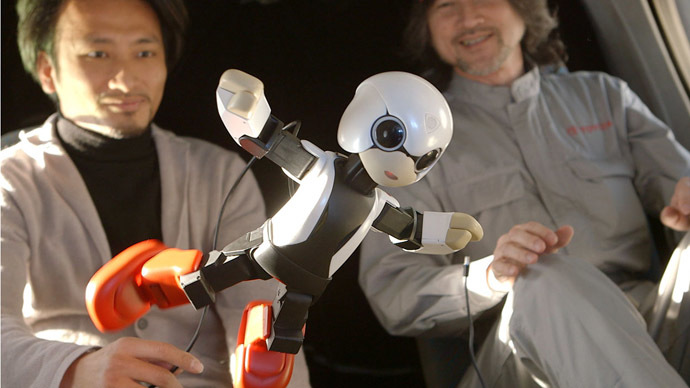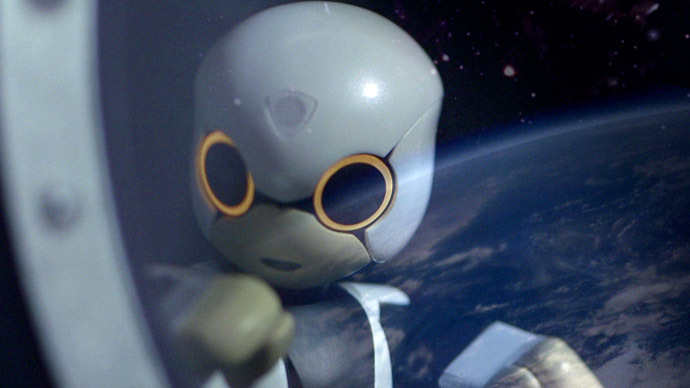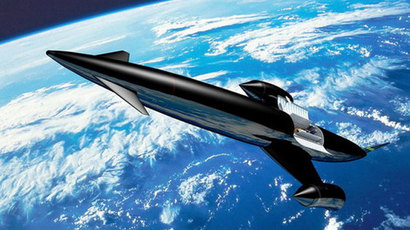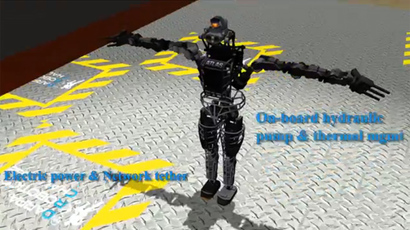‘Robohope’: Talking robot sent to ISS to ‘get along’ with humans (VIDEO)
A small Japanese robot, Kirobo, that boasts the abilities to talk, recognize voice and emotions, as well as to learn, has been sent to the International Space Station. Kirobo says his mission is a historic attempt to befriend robots and humans.
The daring offspring of Japan’s Kibo Robot Project was launched
into space on Sunday aboard a cargo ship. The rocket is already
in orbit with five tons of supplies, and its little passenger is
expected to step on board the ISS on Friday.
The 34 centimeter (13 inch) android got his name from “kibo” –
Japanese for “hope.” Weighing in at just 1 kilogram (2.2 pounds),
it was jointly designed by the University of Tokyo, Toyota Motor
Corp and Dentsu Inc. to operate even in zero gravity.

The most amazing feature of Kirobo is its sophisticated
voice-recognition, face-recognition and communication technology,
which enables it to engage in a meaningful conversation with a
human being. The project designers also take pride in the robot’s
ability to learn new terms and concepts.
So far, Kirobo is said to be able to speak Japanese, and so its
main conversation partner will be astronaut Koichi Wakata.
Japan’s veteran astronaut, Wakata is scheduled to arrive for his
second ISS mission in November, and will take command of the
orbital research base next March.
Kirobo will “remember Mr Wakata’s face so it can recognize him
when they reunite in space,” developer Tomotaka Takahashi
says. It is hoped that the android will provide emotional support
to the astronaut.

According to the project’s website, the ultimate mission of the
robotic astronaut is “to help solve the problems brought about
by a society that has become more individualized and less
communicative.” The Japanese scientists believe that such a
conversation partner represents a “hope” for people living
in isolation, and could serve as “a mediator between person
and machine, or person and internet and sometimes even between
people.”
But it is also said to be an ambitious step towards a future of
mankind that has been described in science-fiction books.
“I want to help create a world where humans and robots can
live together and get along,” Kirobo told reporters when the
project was unveiled in late June.
On its return from orbit – where the talking android will stay
until late 2014 – Kirobo is going to talk about his adventures
with a twin robot, Mirata.














